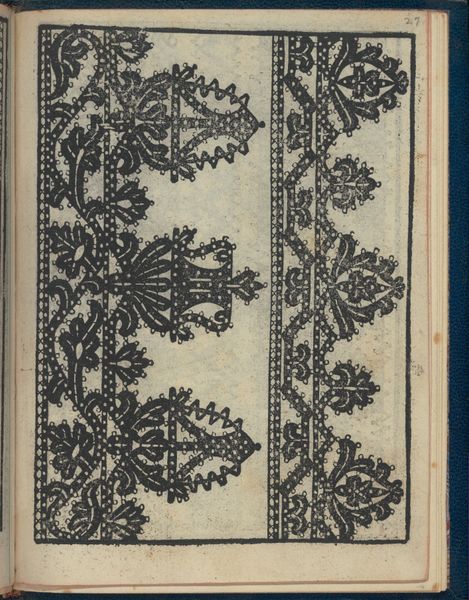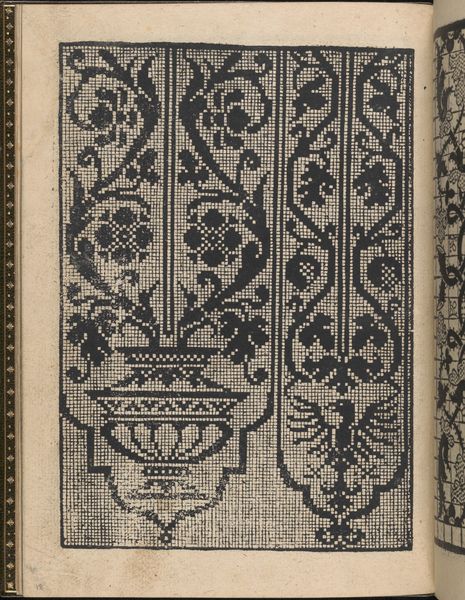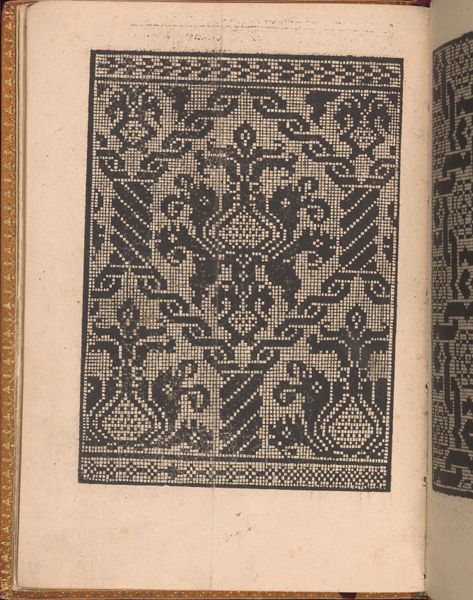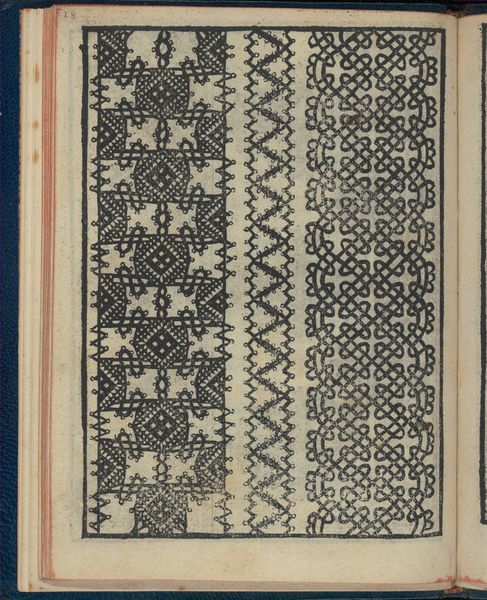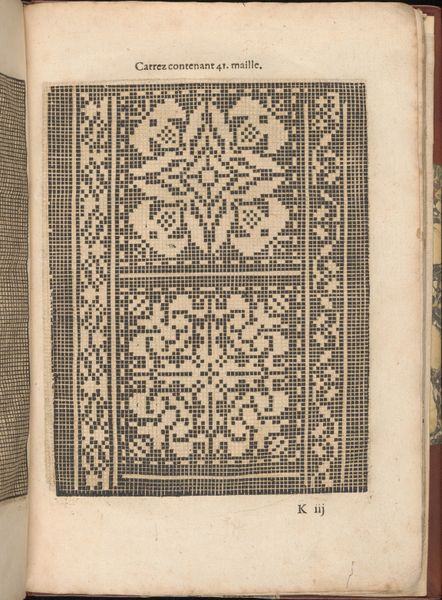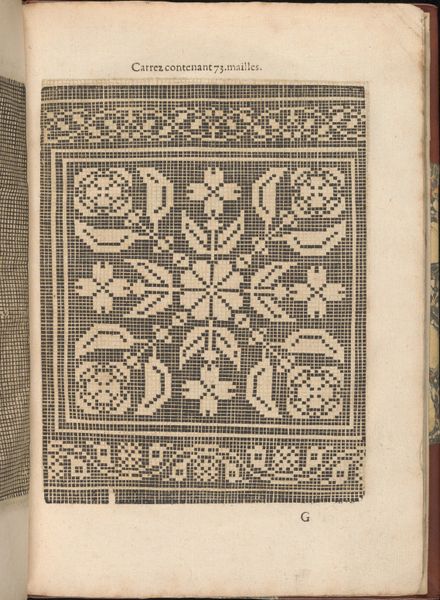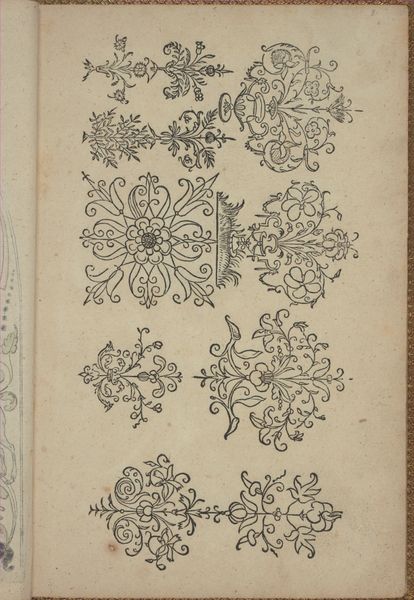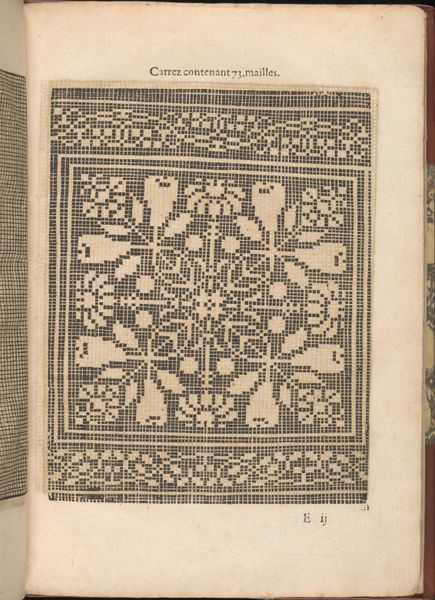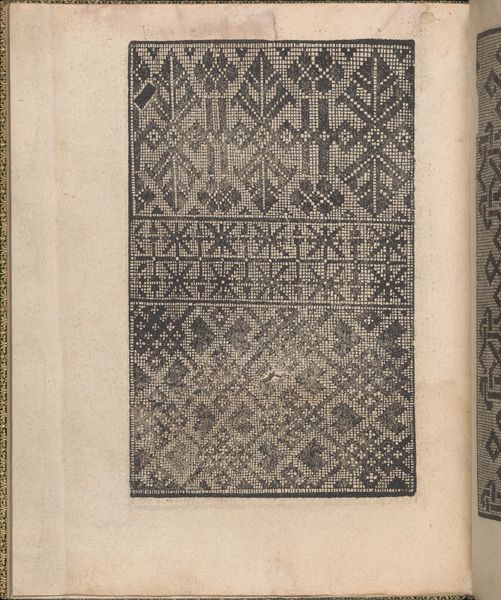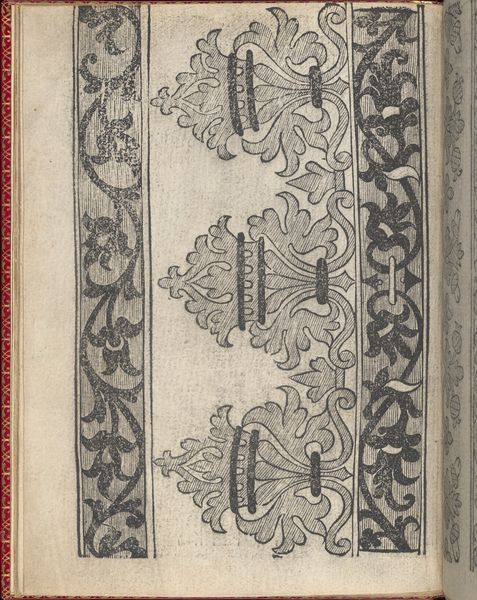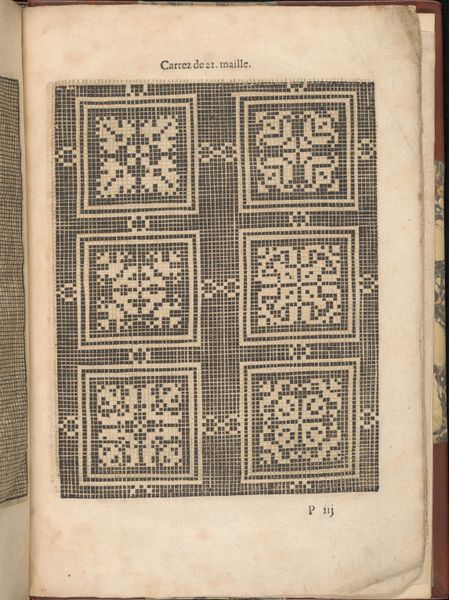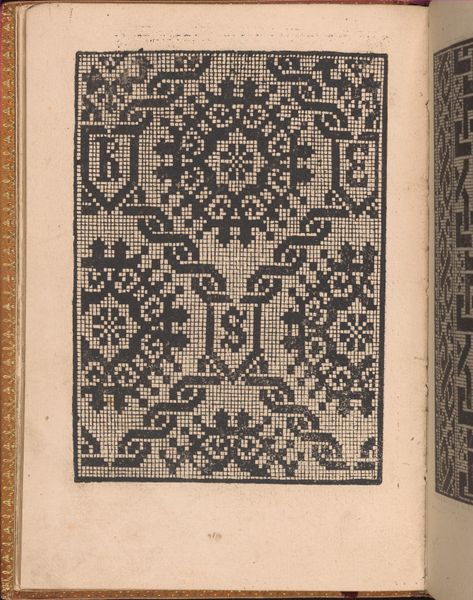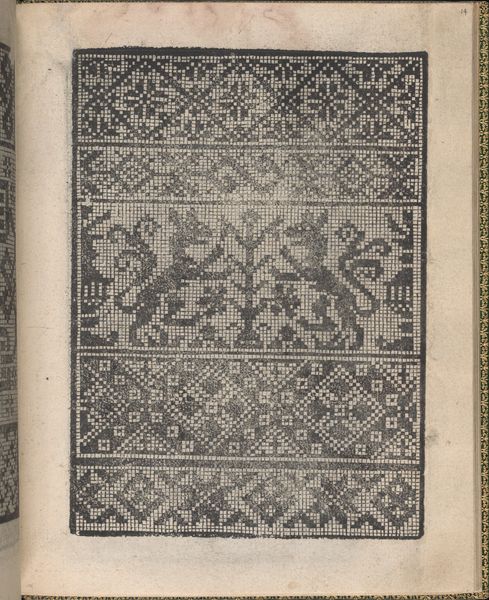
Le Pompe: Opera Nova, page 16 (recto) 1557
0:00
0:00
drawing, print, paper
#
drawing
# print
#
book
#
paper
#
11_renaissance
#
line
Dimensions: Overall: 8 1/16 x 5 7/8 in. (20.5 x 15 cm)
Copyright: Public Domain
Curator: This intricate page comes from "Le Pompe: Opera Nova," printed in 1557 by Giovanni Battista and Marchio Sessa. It's a pattern book, showcasing designs for lace and needlework, and is held in the collection of the Metropolitan Museum of Art. Editor: My first thought is just how striking this is. It looks like something almost contemporary, especially given its graphic, almost stark design using solely black ink. The density of pattern is captivating. Curator: Absolutely, the density is deliberate. Pattern books like these democratized design. They facilitated the spread of visual ideas to a wider, primarily female, audience involved in textile production and domestic crafts. They become active agents in visual culture. Editor: Fascinating! So it's a direct intervention in, or perhaps a commentary on, women’s domestic labor? The creation of "high" art is supported by textile laborers of the domestic space. Does the printing of this work challenge notions of gendered labor practices? Curator: Exactly! And not just gender, but class as well. These designs were accessible, even if the materials to execute them were not. Lace, especially, signified luxury and status. Owning a pattern book did not mean one could afford silk thread, or gold trim, or many yards of linen. The proliferation of designs allowed one to fantasize about social mobility through acts of homemaking. Editor: I can see the inherent social and political commentary. By the deliberate act of disseminating complex artisanal patterns, the artist facilitates an expanded agency for the individual executing the piece, whether they be working-class textile producer or noblewoman completing "domestic duties". Curator: The designs themselves also tell a story. These aren't simply decorative flourishes. Consider the stylized floral motifs; in that time, even those bore symbolic meanings linked to wealth, fertility, and social standing. The zigzag border may reference specific family crests! Editor: The labor made visible through design - that's such a powerful concept, especially in today's context where fashion and art are so intertwined, but where the supply chain itself often obscured. Curator: Indeed, the "Le Pompe: Opera Nova" isn’t simply an aesthetic artifact; it serves as a crucial historical document reflecting the complex negotiations of class, labor, and artistic expression in 16th century Europe. Editor: It's left me thinking about how design intersects with social structures, and also reminds us of art’s role in potentially subverting norms of class, gender and privilege, even today.
Comments
No comments
Be the first to comment and join the conversation on the ultimate creative platform.
